| |
|
|
| |
It's a breeze
Sat 20th August, 2011
|
|
|
|
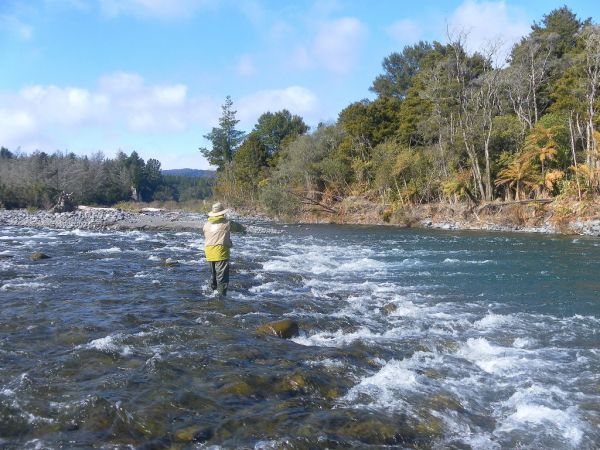
After the snow that fell all around Turangi fizzled out, anglers had to overcome the unrelenting cold southerly "breeze" that has blown all week. It was supposed to ease yesterday but its Saturday morning now and looking at the trees outside the bach, its going to be another frustrating day for fisho's on the Tongariro. This predominantly downstream wind direction not only makes mending difficult but talking to other anglers there may be another problem...setting the hook properly.
I've talked to a few this week who have told me they've hooked fish which are not "sticking".
A couple of days ago after an early start I played five in one stretch and never landed one of them. I think this is partly due to the difficulty of removing enough of the downstream bow which you can't avoid with these southerlies. When you think about it explaining to someone, especially a novice angler, how to hook, play and land a fish isn't easy. It involves what I can only describe as "feel" something that eventually comes with time spent on the water.
American blogger and life-long angler Bill Thrussell has written the best description of how to do this that I've read so far. This knowledge has come from many years chasing trout, as Bill says
" I've spent most of my life fishing...the rest I've wasted". This is part one of a slightly shortened version of his article. Next week I'll follow it with Bill's "how to play and land bigger fish".
"You can read and view plenty about flies, fly tying, knots, casting, presentation, finding fish, tackle selection, et al, but what about playing and landing the fish once you have inwardly digested all that stuff and actually find yourself attached to one of these fabled fishes? Help is at hand.
O.K. so there you stand, thinking about how much you would like to be back at work, stripping the line in through you rod-hand forefinger. Suddenly your reverie is broken by some damn-fool fish grabbing your fly. What happens next?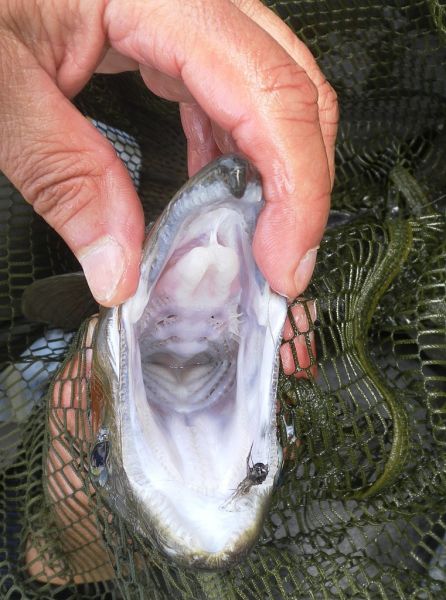
The first requirement is to ‘set’ the hook.
Setting the hook means embedding the hook securely in the fish. Achieve this by pulling down sharply on the line using your line hand, but always ensuring the line remains sliding through the forefinger of your rod-hand. But, just pulling down on the line is only of any use if the line is tight to the fish. Just pulling on the line with the rod tip up, while there is any slack in the system, will only lift slack line off the water, and not move the hook at all. So, many anglers pull on the line hand and lift the rod-tip up, sharply. While this looks spectacular, it is often ineffectual, unless you are close to the fish. But even then there is trouble right here at river city.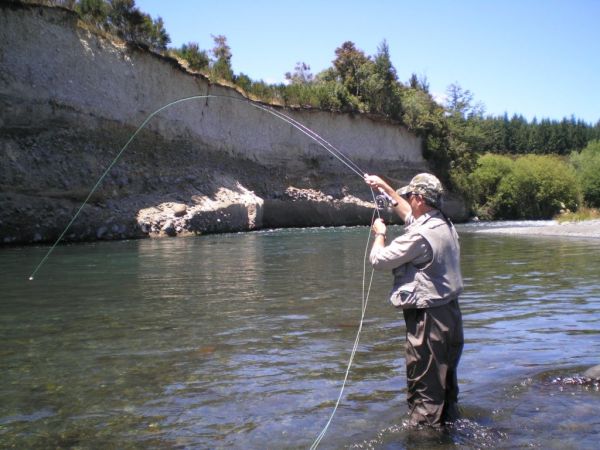
If you manage to set the hook, you are now standing with rod tip high in the air. If the trout moves towards you, you have the Devil’s own job to avoid introducing slack again - you cannot lower the rod because that will form more slack - at which point many anglers select the panic option.
A much better way is to fish with the rod tip low to the water, and when a fish hits, move the rod tip in the direction of any curve of line on the water.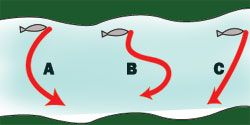
The red lines indicate the fly lines curve on the water. The arrow indicates the direction the rod tip should move to set the hook. This means that if you have, for example, a curve or slack line on the water, move the rod tip in the direction of the section of the curve nearest to the rod tip. Keep the rod tip just above the water and move it parallel to the water, while pulling down sharply with the line hand. It is important to not take the rod tip behind you.
This method uses the 'grip' of the water itself, and the current, to 'anchor' the line, and transfer the power of the pull more directly to the hook. If the fish runs toward you can leave the line on the water and use the loop formed on the water by the current to maintain pressure on the hook.
I want to reiterate this point about leaving the line on the water. There is an almost overwhelming urge yelling in your mind to lift the rod tip up before removing all slack between the rod tip and the fish. The water, the current, and the trout, all pulling at the line will hold the hook in a fish's mouth till you can get everything up tight - there is simply no need to lift the rod tip until you are sure all slack will be removed by doing so. If the line is tight to the fish when it takes the fly, usually only a short line-pull is necessary to set the hook. It is worthwhile to remember a fly hook only needs to move about 2-3mm (1/4") to penetrate past the barb on even the biggest hooks used for freshwater fly-fishing. Very often just the force exerted on slack-free line, when the fish turns away with the fly in its mouth, will set the hook without any interference from you. If the line is tight to the fish when it takes the fly, usually only a short line-pull is necessary to set the hook. It is worthwhile to remember a fly hook only needs to move about 2-3mm (1/4") to penetrate past the barb on even the biggest hooks used for freshwater fly-fishing. Very often just the force exerted on slack-free line, when the fish turns away with the fly in its mouth, will set the hook without any interference from you.
Now with the fish firmly attached you can set about fighting the fish, and I need here to divide this bit into two sections - big trout and not-so-big.
If you are fishing where it is very unusual for trout to take your line out into the 'backing' the thin line running from the fly-line and onto the reel and fish do not get much over 1.5 to 2kg (3 to 4lb) you can play the fish using the line only, without using the reel at all. Hold the rod at an angle of about 45 degrees to your body, point the rod tip toward the line coming off the water (never at the fish, unless of course the line is tight to the fish) and use your rod-hand forefinger to press the line against the rod handle.
You should try and maintain a constant bend in the rod, by gripping the line to apply tension or allowing the line to slip through your line-hand fingers, and rod-hand fore-finger. If the rod tip ducks down let the line slip. You should in general try to keep the rod at about the 45 degree angle, but if the fish really takes off lower the rod tip. The tip section is there to absorb the lunges of the trout, and to maintain constant pressure.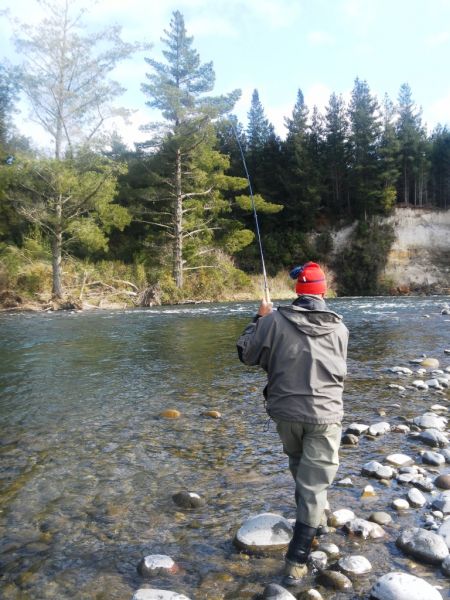 Your immediate job is to get the fish tight to the rod tip. When you get an opportunity to retrieve some line, using your line hand, pull line in through your rod-hand forefinger - called 'stripping' the line. As you reach the end of a strip, grip the line with your rod-hand forefinger, and slide your line hand up to grip the line again. Your immediate job is to get the line tight between the rod tip and the fish. Then by stripping and slipping line the fish will gradually tire to the point where you can think about landing it .If you can get the line onto the reel, you should do so. Having loose coils of line wafting around in the water or on the ground is inviting disaster. I could not even begin to estimate how many fish I have lost, and seen lost, from line tangling around legs, rocks and boulders, shore debris and undergrowth. Having the line going directly onto the reel will help when you come to land the fish". Your immediate job is to get the fish tight to the rod tip. When you get an opportunity to retrieve some line, using your line hand, pull line in through your rod-hand forefinger - called 'stripping' the line. As you reach the end of a strip, grip the line with your rod-hand forefinger, and slide your line hand up to grip the line again. Your immediate job is to get the line tight between the rod tip and the fish. Then by stripping and slipping line the fish will gradually tire to the point where you can think about landing it .If you can get the line onto the reel, you should do so. Having loose coils of line wafting around in the water or on the ground is inviting disaster. I could not even begin to estimate how many fish I have lost, and seen lost, from line tangling around legs, rocks and boulders, shore debris and undergrowth. Having the line going directly onto the reel will help when you come to land the fish".
Part two entitled "Bigger Fish" next week. Lots of other good stuff at www.btrussell-fishingthroughlife.blogspot.com
Despite the wind I had a great day on the river yesterday with father and son Rob and Ian Boisvert from the U.S.A. I bet you did like me and read that as " Boysvert " but it has a French-Canadian origin and is pronounced " " Beauvoir " which makes you wonder why they didn't spell it Beauvoir in the first place. Dad Rob has plenty of time to fish because he recently retired from 26 years in the American military. I'd like to explain to you what he did in the army but National Security issues prevent this...if I did they'd have to kill us all. Son Ian is a renewable energy attorney from San Francisco and is over here on a Fellowship exchange. As an after thought while packing for the trip... just by chance you understand...he brought his fly fishing gear with him...yeah right!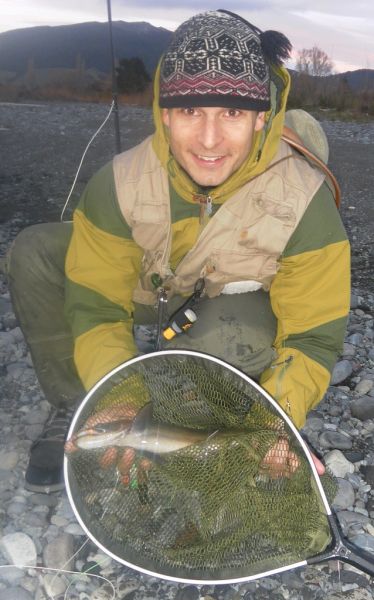
We started off with a quick chuck in a couple of spots around town, just in case any fish had moved overnight. The rest of the day was going to be spent further upriver. Within 15 minutes Ian was into his first fish and after missing a couple it wasn't long before he landed a second. 
As we drove to Red Hut it was already obvious it was going to be a tough day despite the early success. The wind was a real headache for Rob who is a lefty but he kept at it and eventually nailed one. Minutes later as he lifted the rod tip to recast, the line straightened as a good fish slashed at the moving nymph.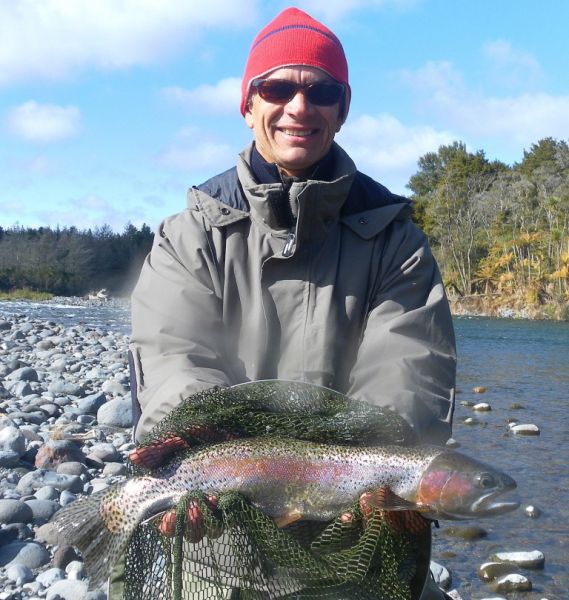 Occasionally the southerly would die down and even though its still winter the appearance of birds diving and dipping along the river indicated there was one of those typical short-lived Tongariro hatches taking place. Turning over a few stones there were plenty of smallish nymphs on the undersides, making the size 16 flash-back PT's a good choice. After lunch we moved down below Red Hut to give Robs over worked casting arm a rest and put him in some water more suited to a lefty. It did the trick and as I changed son Ian's fly Dad hooked into this jack after wading the river to fish a short run on the opposite bank. Occasionally the southerly would die down and even though its still winter the appearance of birds diving and dipping along the river indicated there was one of those typical short-lived Tongariro hatches taking place. Turning over a few stones there were plenty of smallish nymphs on the undersides, making the size 16 flash-back PT's a good choice. After lunch we moved down below Red Hut to give Robs over worked casting arm a rest and put him in some water more suited to a lefty. It did the trick and as I changed son Ian's fly Dad hooked into this jack after wading the river to fish a short run on the opposite bank.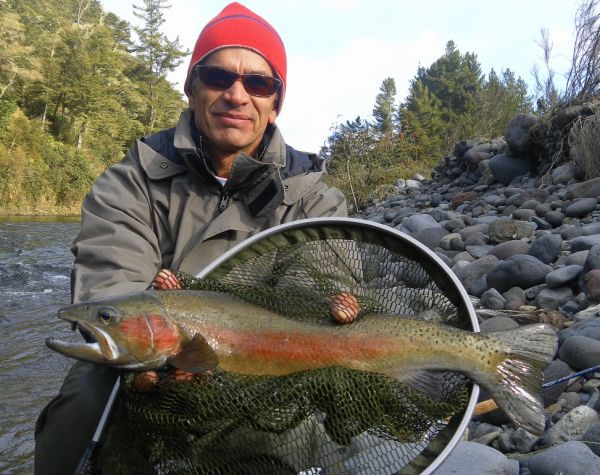
With an hour left we shot back to the Braids because it often switches on again late afternoon. It was also an excuse to go back to the car-park and get stuck into the ice-cold six pack that the absent minded guide had left in the back of the truck.
The river had been relatively quiet most of the week but looking around the Braids you could tell it was Friday and fisho's had already arrived for their weekend fix.
Straight away I recognized the unmistakable outline of North Shore Fly Fisher's Duncan Frew who has recently moved from Auckland and now lives in the Plank Pool. Without Ross around to impose a gagging order I can now reveal that he is the man behind TRM's Fly Fishing Clinic...the famous "Trout Whisperer". By the time we met up he had hooked several fish in the Braids and like others this week only landed half of them. He very kindly gave up his spot to Rob and Ian but I think by then we were half an hour too late and it needed to be rested for a while.
So not an easy week, there are small numbers of fresh fish occasionally turning up but still no big runs. As expected more and more recovering fish are being taken as the early spawners make their way back to home base. With the river still low and clear its the same old story...best to fish it like you would in summer. Looking out of the window the wind does at last appear to be dropping and its a beautiful bright and quite warm winters day. There is rain forecast again for the latter part of next weekend. Lets hope that this time we buck the trend and get some...we need it.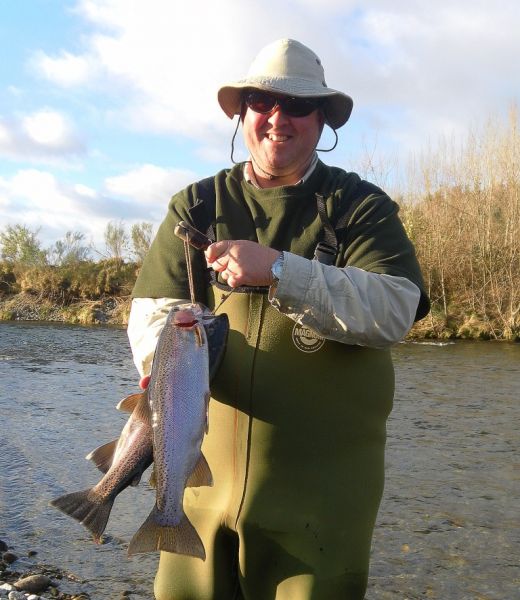
Be lucky guys
Mike. |
|
|
| Back to Top |
|
|
|
|
| |
| COMMENTS |
|
| Hey Mike (and Jake) - Despite the fact that you forgot the beer, thanks for a great day on the Tongaririo. Ian and I truly want to thank you for imparting your knowledge of the river and how to fish it. While the wind certainly presented some issues, especially for this lefty, you were able to put us onto some nice fish. Best, Rob |
|
|
|
| robboisvert | Wed 24th August, 2011 | |
|
|
|
| |
|
|
|